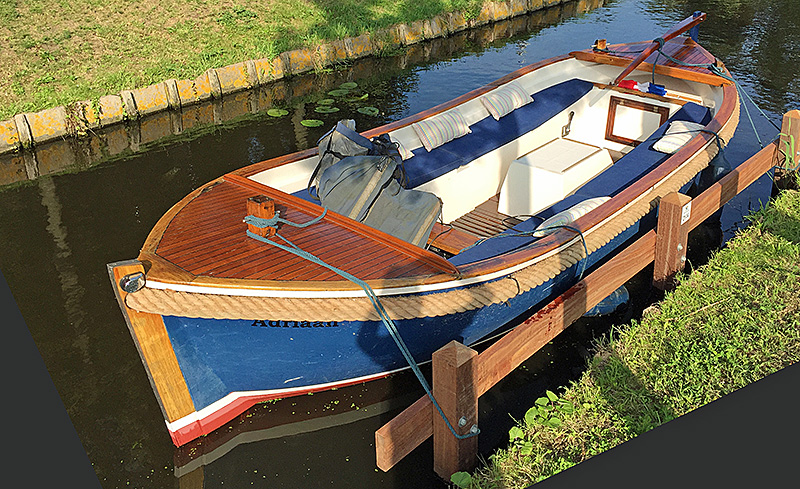A Sloep 650
Aluminium 650 Navalia Sloep Boot inboard diesel 650 x 240 te koop op Botentekoop. Nl Botentekoop.nl is the site with the best selection in the Netherlands.
- API-650 includes a section for calculating thickness of self-supporting roofs; you work through it backwards to find the minimum slope. Note that API-12D, 12F, and UL-142 all have different slope requirements from API-650.
- Rockland Dozer Slope Boards dramatically increase dozer productivity. They enable a dozer to move more material per pass and fine grade slopes. This saves time, fuel, and reduces cost. Sloping work can also be done while the dozer stays on level ground. This reduces machine wear, operator fatigue, and increases safety.
Tank Bottom Slope
Tank Bottom Slope
1) I am looking for some information on hillside tank bottoms (ie sloping across the diameter of the tank). Can anyone provide some information with respect to the topics below.
a) What are some guidelines as to the largest practical tank diameter that can have a hillside bottom?
b) Can this style of tank bottom be used on concrete ring walls? How is the difference in elevation from side to side accounted for?
c) Any guidelines as to the maximum slope?
d) Any other issues with using a hillside tank bottom?
2) For cone up bottoms, can the slope be as large as 1:50 or 1:12? What are the issues with using this large of slope?
Thanks
A sloop is a sailboat with a single mast[1] typically having only one headsail in front of the mast and one mainsail aft of (behind) the mast.[note 1] Such an arrangement is called a fore-and-aft rig, and can be rigged as a Bermuda rig with triangular sails fore and aft, or as a gaff-rig with triangular foresail(s) and a gaff rigged mainsail. Sailboats can be classified according to type of rig, and so a sailboat may be a sloop, catboat, cutter, ketch, yawl, or schooner.[2] A sloop usually has only one headsail, although an exception is the Friendship sloop, which is usually gaff-rigged with a bowsprit and multiple headsails.[3] If the vessel has two or more headsails, the term cutter may be used,[4] especially if the mast is stepped further towards the back of the boat.
When going before the wind, a sloop may carry a square-rigged topsail which will be hung from a topsail yard and be supported from below by a crossjack. This sail often has a large hollow foot, and this foot is sometimes filled with yet another quadrilateral square rigged sail called a 'save-all topsail.'[5]
The name originates from the Dutchsloep, which is related to the Old Englishslūpan, to glide.[6] In naval terminology, 'sloop-of-war' refers to the purpose of the craft, rather than to the specific size or sail-plan, and thus a sloop should not be confused with a sloop-of-war.
Asloep 650 Review
After the cat rig which has only a single sail,[7] the Bermuda rig is the simplest sailing rig configurations. It is the most popular yacht rigging[8] because it is easier to sail with a smaller crew or even single-handed, it is cheaper since it has less hardware than more complex rigs, and it sails well into the wind. A limitation is that when a boat gets over 45 feet in length, the sails become so large that they are difficult to handle,[7] although modern technology is helping with this through the use of electric winches and furling systems.
The headsail can be masthead-rigged or fractional-rigged. On a masthead-rigged sloop, the forestay (on which the headsail is carried) attaches at the top of the mast. On a fractional-rigged sloop, the forestay attaches to the mast at a point below the top. A sloop may use a bowsprit, a spar that projects forward from the bow.
See also[edit]
- Mast aft rig, a single mast rig with a mast further back than a sloop or cutter.
- Chialoup, an historical type of sloop produced in the East Indies.
- Bermuda sloop, originally used for a type of sea-going, sloop-rigged vessel. Today used for any Bermuda-rigged sloop.
- Bermuda Fitted Dinghy: a scaled-down sloop used for racing in Bermuda.
- Hope: an example of a traditional sail-powered oyster-dredging sloop.

Notes[edit]

- ^A sloop may also carry several square-rigged sails including a crossjack, topsail, save-all topsail, and top gallant sail, as well as a gaff-rigged topsail on the main mast and a jib and flying jib ahead of the headsail.
References[edit]
- ^'SLOOP meaning in the Cambridge English Dictionary'. dictionary.cambridge.org. Retrieved 2019-05-12.
- ^'Cutter sailing craft'. Encyclopedia Britannica. Retrieved 2019-05-12.
- ^Jones, Gregory O. (2001-12-06). The American Sailboat. MBI Publishing Company. ISBN9780760310021.
- ^'Cutter sailing craft'. Encyclopedia Britannica. Retrieved 2019-05-12.
- ^Samuel Fallows (1885). Progressive Dictionary of the English Language. Progressive. p. 148.
- ^'Sloop'. dictionary.com. Retrieved 12 May 2019.
- ^ ab'What's in a Rig? Cat Rig'. American Sailing Association. Retrieved 12 May 2019.
- ^'Sailboat Rig Types: Sloop, Cutter, Ketch, Yawl, Schooner, Cat'. Jordan Yacht and Ship Co. Retrieved 12 May 2019.
External links[edit]
Sleep 60
| Wikimedia Commons has media related to Sloops. |